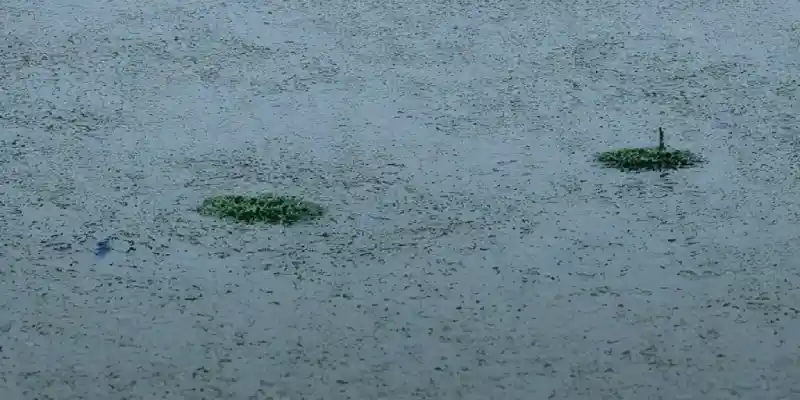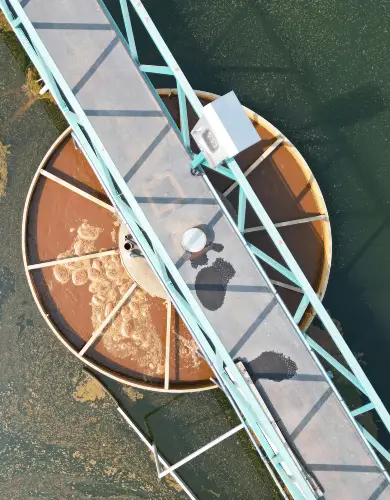What are Trade Effluent Charges?
Trade Effluent Charges are a subject that causes endless confusion to British businesses.
This guide clarifies what trade effluent is, the producers’ responsibilities, and how it impacts business water bills.
Shortcuts
- The UK Sewage System
- What is Trade Effluent?
- What is the Trade Effluent Charge?
- What are my responsibilities with trade effluent?
- What is trade effluent consent?
- When is trade effluent consent required?
- What industries should apply for trade effluent consent?
- How do I get trade effluent consent?
- How long does a trade effluent consent last for?
- What happens if I’m refused consent?
- How much will my trade effluent bill be?
- What is ‘The Mogden Formula’?
- What factors influence the trade effluent charge?
- Trade effluent monitoring
- What is trade effluent analysis?
- How to reduce trade effluent charges
The UK Sewage System
Understanding Trade Effluent Charges requires a general understanding of UK sewage system, so here’s a short explainer.
Sewage is the waste material that is produced by households, businesses, and industries and is typically carried away by a system of pipes known as a sewer system, that regional water wholesalers manage.
In the UK, there are two types of sewage:
- Domestic sewage (or “sanitary sewage”) from flushing toilets and draining sinks and contains a mix of water, human waste, food scraps, detergents, etc.
- Industrial sewage (or “trade effluent”) from industrial and commercial activities such as manufacturing processes, chemical production, food processing, and other industrial activities.
These wastewaters are combined together and moved into a local treatment facility where it is cleaned to a standard where it can be returned to a reservoir, river or the sea.
If your business begins releasing trade effluent as part of its wastewater, you are legally required to get consent from the regional water wholesaler to do so (Thames Water etc.). You can use your business water supplier as the first point of contact.
The process of treating wastewater is essential to avoid contamination of the environment but is highly carbon intensive. Find out more in our article on the environmental impact of the water industry.
What is Trade Effluent?
The effluent is any liquid sewage that comes from industrial and commercial sources and can include waste from manufacturing processes, chemical production, food processing, and other industrial activities. It may contain chemicals, heavy metals, and other pollutants that can be harmful to the environment and human health.
More succinctly, it is anything that goes into your drain that isn’t domestic sewage. Here are some common examples of trade effluent:
Trade effluent produced in consumer services
- The water drained from a local car wash that includes cleaning products
- The wastewater from a commercial launderette that includes detergents
- The water drained from a swimming pool that includes chlorine
Trade effluent produced in production activities
- Liquid waste from the production of food and drinks
- Waste products from the production of pharmaceuticals
- Water used in nuclear power stations.
The nature of trade effluent varies significantly from one business to another in terms of both strength and volume produced. Trade effluent can contain substances that risk harm to people, the water network and the wider environment and is therefore carefully controlled by the local water wholesaler.
A business cannot discharge trade effluent without consent, and doing so constitutes a criminal act.
What is the Trade Effluent Charge?
The Trade Effluent Charge is a fee that businesses and industries in the UK may be required to pay for discharging trade effluent into the public sewer system.
The charge is typically calculated by the regional water wholesaler based on the volume and strength of the effluent being discharged, as well as other factors, such as the level of treatment required before the effluent can be safely released into the environment.
Your business water supplier will then pass on these charges, plus a retail fee, to your business and will present them separately from the domestic wastewater charges on a business water bill.
The purpose of the charge is to cover the costs of treating and managing the trade effluent, as well as to encourage businesses to reduce their environmental impact by minimising waste and implementing more sustainable practices.
What are my responsibilities with trade effluent?

It is essential for the health of the population and the wider environment that the water wholesalers carefully manage and treat trade effluent. Wholesalers must carefully treat wastewater to avoid sewage pollution in rivers.
The key responsibility of businesses is to ensure that you’ve gained consent for any trade effluent you produce. The Water Industry Act 1991 sets out this requirement for consent, and it is a criminal offence to produce trade effluent without permission.
If you are currently producing trade effluent without consent, you must immediately contact your water supplier, who will talk to the wholesaler on your behalf.
The local water wholesaler manages the sewerage network and is responsible for issuing consent to properties in their region.
The consent given by your wholesaler will contain several specific conditions to limit the volume and quantity of contaminants in the trade effluent. If a business does not adhere to the limits of the consent, it is an offence under section 121 of the Water Industry Act 1991.
What is trade effluent consent?
Trade effluent consent is a legal document issued by your regional water wholesaler giving your business the consent to discharge trade effluent into the sewers within the limits of specified criteria.
A trade effluent consent, when granted, will include the following restrictions and specifications:
- Premises – Defines the property from which the trade effluent is produced.
- Sewer affected – Defines the sewer in which the trade effluent is disposed of.
- Dates – Defines a commencement date of the consent and an end date if it is a temporary consent.
- Maximum quantity – The maximum volume of trade effluent to be discharged in any 24 hours.
- Maximum rate – The maximum rate of discharge of trade effluent
- Eliminated substances – Any substances which must be removed from the trade effluent before discharge
- Temperature limit – A maximum temperature of the trade effluent when discharged into the sewers.
- pH limits – An allowable range of acidity and alkalinity of the trade effluent on discharge.
Trade effluent consents are publicly available documents recorded on a register maintained by the wholesalers.
When is trade effluent consent required?
Your local wastewater wholesaler must grant trade effluent consent before you discharge any trade effluent into the public sewer. The exception to this rule is where the trade effluent being discharged meets the definition of domestic sewage.
Discharging domestic sewage into the sewerage system does not require trade effluent consent. This is the case even if it is a business premise that is producing domestic sewage.
Domestic sewage includes wastewater from:
- Toilets
- Personal washing, showering and bathing
- Commercial cooking for sale directly to consumers, such as a restaurant or sandwich bar
- Washing dishes and cooking equipment on a scale comparable to domestic cooking after using them on the premises
Another term for domestic sewage used in the water industry is greywater. The UK government has issued specific guidance on what qualifies and does not qualify as domestic sewage here.
If you have any doubt about the circumstances of your particular business, we recommend contacting your business water supplier for clarification.
What industries should apply for trade effluent consent?
Trade effluent consent is required for companies of all industries where trade effluent is discharged into a public sewer.
The criteria for requiring consent instead depend on the nature of the substance discharged. See what is trade effluent?
How do I get trade effluent consent?
A trade effluent consent application is submitted to your water supplier, who will work with the local wholesaler to process your application.
The trade effluent application consists of one of the following two forms:
- Trade effluent – Form G-02
- Trade effluent – Form G-03 – Trade effluent discharge application
The non-household market operator has published guidance on how to fill out these consent applications:
How long does a trade effluent consent last for?
Trade effluent consent applications are either for permanent consent or temporary consent.
Temporary consents come with a defined end date. After the defined end date, the consent will cease to be effective, and a new consent application must be submitted to continue discharging trade effluent into the sewer.
Permanent trade effluent consent remains in place indefinitely.
What happens if I’m refused consent?
The water wholesalers have the right to refuse a trade effluent consent application on the basis that:
- The trade effluent will cause undue harm to the environment
- The trade effluent will damage the sewage system
- The local treatment plant will not be able to process the trade effluent
If your business is refused consent to discharge trade effluent in the public sewers, then there are several alternative options, including:
- The use of a disposal firm to take the effluent away and treat it for you.
- Treating the trade effluent at your business property to change it to a state that would be suitable for disposal in the public sewer network.
- Altering your business operations such that the effluent is suitable for disposal in a public sewer.
How much will my trade effluent bill be?
The regional water wholesalers who maintain the sewerage network and waste treatment plants determine how much they will charge businesses to dispose of trade effluent. Each of the regional wholesalers publishes how they determine the trade effluent charge in their annual scheme of charges.
The regional wholesalers in England and Scotland use the ‘Mogden formula’ to calculate their trade effluent charge. This complex formula attempts to unify the charge calculation for a wide variety of forms of trade effluent.
What is ‘The Mogden Formula’?
The Mogden Formula is:
Charge per unit of effluent = R + [(V + Bv) or M] + B(Ot/Os) + S(St/Ss)^0.7
R = reception and conveyance charge [p/m3]
V = primary treatment (volumetric) charge [p/m3]
Bv = additional volume charge if there is biological treatment [p/m3]
M = treatment and disposal charge where effluent goes to sea outfall [p/m3]
B = biological oxidation of settled sewage charge [p/kg]
Ot = Chemical oxygen demand (COD) of effluent after one hour quiescent settlement at ph 7
Os = Chemical oxygen demand (COD) of crude sewage one hour quiescent settlement
S = treatment and disposal of primary sewage sludge charge [p/kg]
St = total suspended solids of effluent at ph 7 [mg/litre]
Ss = total suspended solids of crude sewage [mg/litre]
The Mogden formula necessarily includes lots of chemical measures to determine the strength of trade effluent. In simpler terms, the Mogden formula says that trade effluent charges will equal the amount of trade effluent discharged multiplied by the strength of the trade effluent.
Next, let’s look at the individual components of the trade effluent charge.
What factors influence the trade effluent charge?
i. Reception and conveyance
The wholesaler levies this charge for accepting trade effluent and transporting it to a treatment centre through the sewerage network. The charge usually comes in two parts:
- A fixed charge if you have active trade effluent consent at a property.
- A volumetric charge for each cubic meter of trade effluent discharged into the sewer.
ii. Treatment charges
This charge is for treating the trade effluent, a process in the water cycle that cleanses the sewage water before returning to rivers or streams. There are several components to this charge:
- A volumetric charge for the treatment of each cubic meter of trade effluent processed through the treatment centre.
- A biological treatment charge – A charge levied for the biological treatment of the trade effluent at the treatment plant. The charge depends on the chemical oxygen demand of the trade effluent (a measure of how strong the trade effluent is). The stronger the effluent, the higher this charge will be.
iii. Sludge disposal
The treatment of trade effluent produces a sludge of pollutants that is separated from the clean water. Trade effluent charges include a specific charge for the disposal of this sludge. The charge is levied based upon the weight of the sludge produced from treating the trade effluent your business produces.
Trade effluent monitoring
Your water wholesaler will regularly take samples of your trade effluent discharge to ensure that your business is adhering to the consent and collecting the composition data to allow them to charge your business accurately.
A condition of your consent document will be that you provide an access point to the trade effluent discharge to collect samples.
Depending on the nature of your trade effluent, your business may be required to install a method of monitoring your effluent discharge. A monitoring system is recommended as it allows your business to adhere to the trade effluent consent and be informed of any issues arising.
What is trade effluent analysis?
Trade effluent analysis is a service provided by specialist waste discharge laboratories to analyse trade effluent discharge to produce a tailored waste discharge report. The waste discharge report measures the strength of the contaminants controlled in trade effluent consents, including:
- Hydrogen Cyanide & Hydrogen Sulphide
- Toxic Metals (Chromium, Lead, Mercury, Zinc, Copper, etc.)
- pH
- Ammonia
- Dissolved Methane
- Chemical Oxygen Demand (COD)
- Biochemical Oxygen Demand (BOD)
- Phenols
- Organics (Hydrocarbons, Pesticides, Herbicides)
- Flammable Substances
How to reduce trade effluent charges
Your business can take active steps to reduce your trade effluent charge; our biggest recommendations are:
- Comparing trade effluent charges from different suppliers. Business water suppliers often add a retail fee to any trade effluent charges against your business. See if your business can benefit if they change business water supplier.
- Installing an effluent treatment system that reduces the strength of your trade effluent. Through the Mogden formula, you will be billed less if your trade effluent is less strong.
- Installing a trade effluent monitoring system so that any reductions in volume or intensity of trade effluent can be measured and the water supplier informed.
- Save on trade effluent charges today using our commercial water comparison service.

